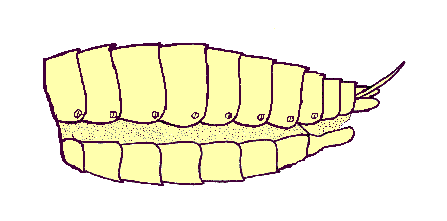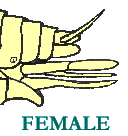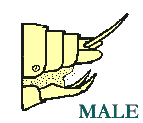Abdomen
An insect’s abdomen is the third functional region (tagma) of its body; the abdomen is located just behind the thorax. In most insects, the junction between thorax and abdomen is broad, but in some groups, the junction is very narrow (petiolate) giving the appearance of a “wasp-waist”.
Entomologists generally agree that insects arose from primitive arthopod ancestors with eleven-segmented abdomens. Some present-day insects (e.g. silverfish and mayflies) still have all of these segments (or remnants of them), but natural selection in more advanced (or specialized) groups has contributed to a reduction in the number of segments — sometimes to as few as six or seven (e.g. beetles and flies).
 Each segment of the abdomen consists of a dorsal sclerite, the tergum, and a ventral sclerite, the sternum, joined to one another laterally by a pleural membrane. The front margins of each segment often “telescope” inside the sclerites of the preceding segment, allowing the abdomen to expand and contract in response to the actions of skeletal muscles.
Each segment of the abdomen consists of a dorsal sclerite, the tergum, and a ventral sclerite, the sternum, joined to one another laterally by a pleural membrane. The front margins of each segment often “telescope” inside the sclerites of the preceding segment, allowing the abdomen to expand and contract in response to the actions of skeletal muscles.
In many adult insects, there is a spiracle (opening to the respiratory system) near the pleural membrane on each side of the first eight abdominal segments. Some spiracles may be permanently closed, but still represented by a dimple in the sclerite.
At the very back of the abdomen, the anus (rear opening of the digestive system) is nestled between three protective sclerites: a dorsal epiproct and a pair of lateral paraprocts. A pair of sensory organs, the cerci, may be located near the anterior margin of the paraprocts. These structures are tactile (touch) receptors. They are usually regarded as a “primitive” trait because they are absent in the hemipteroid and holometabolous orders.



